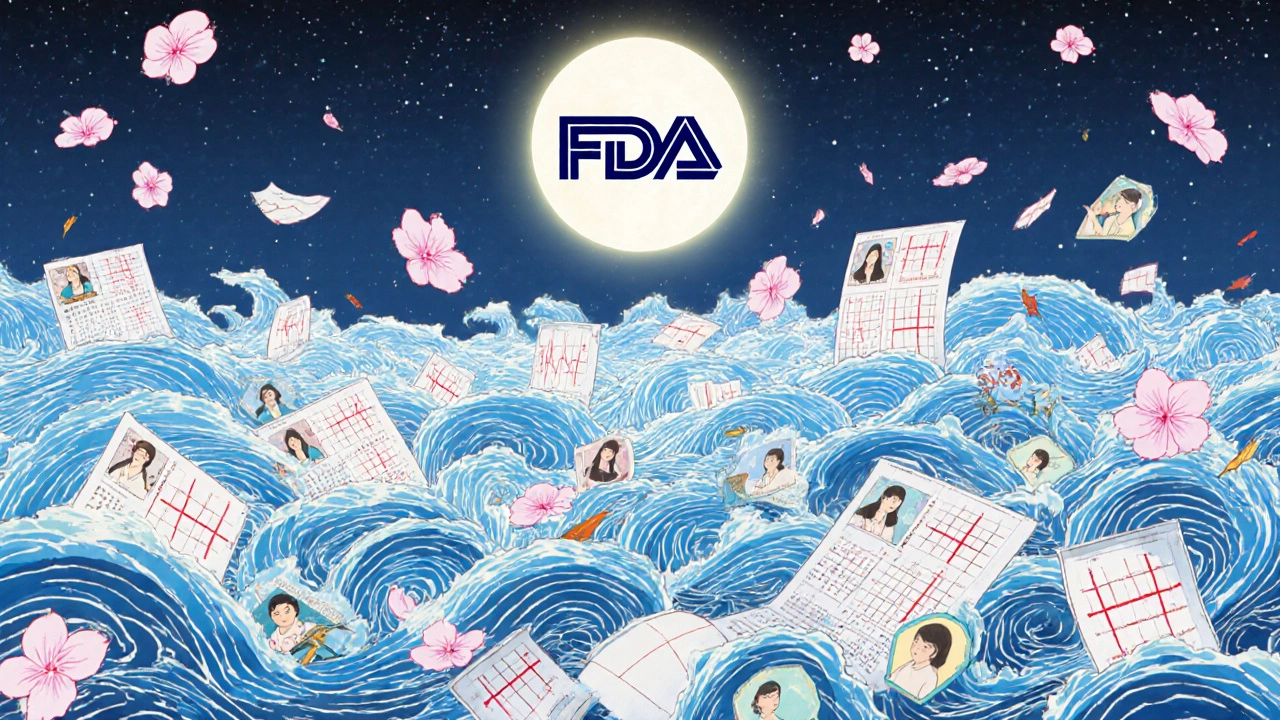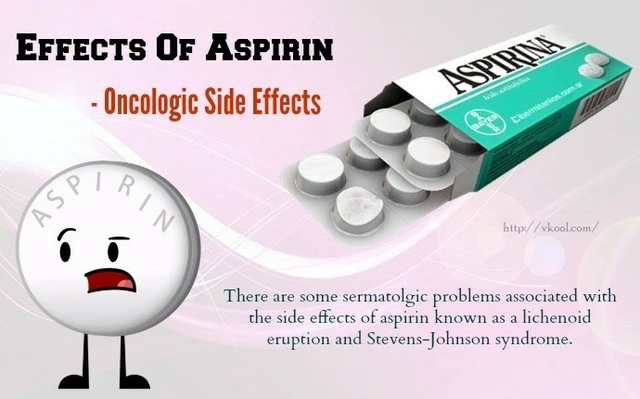Registries vs. Claims Data Decision Tool
Select Your Drug Safety Analysis Criteria
What type of safety question are you addressing?
What level of clinical detail is required?
What population size are you working with?
How to Use This Tool
Select your criteria to determine which real-world evidence source (registrar or claims data) is best suited for your specific drug safety analysis.
Key considerations:
- Registries provide deep clinical data but cover smaller populations
- Claims data covers vast populations but with less clinical detail
- Combined analysis is often most effective (reduces false positives by 40%)
Recommended Data Source
Why this source?
Considerations
When a new drug hits the market, the real test of its safety doesn’t happen in a clinical trial. It happens in the real world-among millions of patients with different health conditions, lifestyles, and genetic backgrounds. That’s where real-world evidence comes in. Two of the most powerful tools for tracking drug safety after approval are patient registries and claims data. These aren’t just backup options; they’re now essential parts of how regulators and drug makers spot hidden risks, understand long-term effects, and make smarter decisions about who should take a medicine.
What Real-World Evidence Actually Means
Real-world evidence (RWE) is clinical evidence drawn from data collected outside controlled trials. Think of it as the messy, real-life version of drug testing. While clinical trials involve carefully selected patients under strict conditions, RWE looks at what happens when a drug is used by thousands-or millions-of people in everyday settings. The U.S. Food and Drug Administration (FDA) started formally recognizing RWE as a valid source for regulatory decisions around 2016, after the 21st Century Cures Act gave it legal weight. Since then, the FDA has used RWE to support over a dozen drug approvals, including five that relied specifically on claims data or registry records.Registries: Deep Dives into Specific Patient Groups
Patient registries are structured databases that collect detailed, long-term information about people with a specific disease or those taking a particular drug. Unlike clinical trials that last months, registries can follow patients for years, even decades. A disease registry might track everyone with cystic fibrosis, recording everything from lung function tests to medication side effects. A product registry follows everyone using a specific drug, like a new diabetes pill, and logs every hospital visit, lab result, or adverse event. These registries are rich in detail. They include ICD-10 diagnosis codes, lab values, imaging reports, and even patient-reported symptoms. One study found that registries capture 37.2% more long-term outcome data than claims data alone. For example, the Cystic Fibrosis Foundation Patient Registry helped uncover that ivacaftor-a drug for cystic fibrosis-worked best in patients with certain genetic mutations. That insight didn’t show up in the original trials because those patients were too rare. But registries aren’t perfect. They’re expensive. Setting one up can cost $1.2 million to $2.5 million and take 18 to 24 months. Annual upkeep runs $300,000 to $600,000. Participation rates are often only 60-80%, which can introduce bias. And nearly a third of academic registries shut down within five years due to funding gaps. Still, when they’re well-run, they’re among the most reliable sources for spotting rare or delayed side effects.Claims Data: The Power of Scale
Claims data is what healthcare providers and insurers use to get paid. Every time someone visits a doctor, fills a prescription, or gets admitted to the hospital, a claim is generated. These claims contain diagnosis codes (ICD-10), procedure codes (CPT), and drug identifiers (NDC). In the U.S., massive databases like IBM MarketScan (200 million lives), Optum (100 million), and Truven (150 million) compile this information into searchable archives. The big advantage? Scale. Claims data can track millions of people over 15+ years. That’s longer than most clinical trials. The FDA used Medicare claims data to study olmesartan (Benicar) in 850,000 diabetic patients between 2007 and 2011. They found no clear link to heart risks. In another case, they analyzed 1.2 million Medicare beneficiaries to check if entacapone increased cardiovascular risk. The answer? No. Claims data is also great for detecting rare events. If a side effect happens in 1 in 10,000 patients, you need huge numbers to spot it. Claims databases have that power. But they’re shallow. They rarely include lab results, symptoms reported by patients, or physical exam findings. Only 45-60% of lab values are captured. Coding errors are common-about 15-20% of diagnosis codes are wrong, according to the Agency for Healthcare Research and Quality (AHRQ). And they don’t capture socioeconomic factors like income or housing, which can influence health outcomes.
Registries vs. Claims Data: A Side-by-Side Look
| Feature | Registries | Claims Data |
|---|---|---|
| Population Size | 1,000-50,000 patients | 100 million+ patients |
| Clinical Detail | 87% completeness for lab values | 52% completeness for lab values |
| Longitudinal Coverage | 5-20 years (depends on funding) | 15+ years (Medicare) |
| Data Completeness | 68-92% | 95-98% for inpatient care |
| Best For | Rare diseases, genetic subgroups, patient-reported outcomes | Large population trends, rare adverse events, long-term use |
| Cost to Establish | $1.2M-$2.5M | $500K-$1.5M (integration only) |
| Limitations | Selection bias, funding instability | Coding errors, lack of clinical context |
When Registries and Claims Data Work Together
The smartest approach isn’t choosing one over the other-it’s using both. The International Council for Harmonisation (ICH) released new guidance in June 2023 recommending this hybrid model. Why? Because when you combine the depth of registries with the breadth of claims data, false positives drop by 40%. That’s huge. Take palbociclib, a breast cancer drug. When the FDA reviewed its safety in new patient groups, they didn’t just look at claims. They combined EHR data, claims records, and post-marketing reports. That multi-source view gave them confidence to approve expanded use. Similarly, the FDA’s Sentinel Initiative connects 11 major healthcare systems and 3 claims processors to monitor safety across 300 million patient records. It’s the largest RWE network in the world.Regulatory Shifts and Future Trends
Regulators are catching up fast. The FDA reviewed 107 RWE submissions in 2022-up from just 29 in 2018. The European Medicines Agency launched Darwin EU in 2021, now connecting 32 databases across 15 countries, covering 120 million EU citizens. In January 2024, the FDA released draft guidance requiring at least 80% data completeness for key variables in registry studies. New tech is accelerating things. AI algorithms now scan claims and registry data to flag potential safety signals faster. A 2024 JAMA Network Open study showed AI cut false positives by 28%. Some companies, like Novartis, are even adding wearable data-heart rate, activity levels-to traditional claims to monitor drugs like Entresto. The FDA’s REAL program, launched in 2023, plans to standardize registry data collection for 20 priority diseases by 2026. Most focus on rare diseases where traditional trials can’t gather enough data.
Why This Matters for Patients and Providers
For patients, this means safer medicines over time. If a drug causes a rare liver injury only after three years of use, registries and claims data are the only ways to find it. For doctors, it means better guidance on who should-or shouldn’t-take a drug. For example, claims data showed that certain heart medications were riskier in elderly patients with kidney disease, leading to updated prescribing guidelines. The cost of ignoring RWE is high. Drugs pulled from the market after approval due to safety issues cost billions and erode public trust. RWE helps prevent that. It turns passive monitoring into proactive learning.What’s Next
The future of drug safety isn’t just about more data-it’s about smarter data. Standardization is key. Right now, every registry uses slightly different formats. Claims data varies by insurer. The FDA and EMA are pushing for common data models so studies can be compared across borders. Pharmaceutical companies are also shifting budgets. In 2017, only 3-5% of pharmacovigilance spending went to RWE. By 2023, that jumped to 8-12%. That’s not just a trend-it’s a transformation. Real-world evidence isn’t replacing clinical trials. It’s completing them. Registries give us depth. Claims data gives us scale. Together, they turn post-market surveillance from guesswork into science.What’s the difference between claims data and registry data in drug safety?
Claims data comes from billing records and includes diagnosis codes, prescriptions, and hospital visits-it’s broad but lacks clinical detail. Registry data is collected directly from patients and clinicians, with detailed lab results, symptoms, and outcomes-it’s deep but covers smaller groups. Claims data is better for spotting rare events in large populations; registries are better for understanding how a drug affects specific subgroups.
Can claims data prove a drug causes a side effect?
Not alone. Claims data can show a statistical association-like more heart attacks in people taking Drug X-but it can’t prove cause. That’s because it lacks clinical context: we don’t know if the patient had other risk factors, or if the diagnosis was coded correctly. To prove causation, you need clinical adjudication-reviewing medical records, lab tests, and physician notes-which is where registries come in.
Why are registries so expensive to run?
Registries require trained staff to collect, verify, and enter detailed data from clinics and patients. They need secure databases, patient consent systems, ongoing recruitment, and regular audits. Many rely on grants or pharma funding, which can dry up. A typical registry costs $1.2-$2.5 million to launch and $300,000-$600,000 per year to maintain. Without steady funding, they often shut down within five years.
How do regulators use RWE to make decisions?
Regulators like the FDA and EMA use RWE to support label updates, approve new uses, or add safety warnings. For example, the FDA approved a new use for pembrolizumab based on registry data from expanded access programs. In another case, claims data helped confirm a drug’s safety in elderly patients after initial trials excluded them. RWE doesn’t replace trials-it fills gaps where trials can’t go.
Is real-world evidence reliable enough for regulatory use?
Yes-when it’s done right. The FDA has approved 12 drugs or indications since 2017 using RWE. Studies show that combining claims and registry data reduces false signals by 40%. But reliability depends on data quality, statistical methods, and transparency. Poorly designed studies can mislead. That’s why regulators now require clear protocols, bias correction (like fixing immortal time bias), and independent validation.











Kihya Beitz
15 Nov, 2025
So we’re spending millions to track drug side effects… but still can’t figure out why my neighbor’s knee replacement didn’t work? 🤦♀️
Registries cost more than my rent. Claims data has more errors than my ex’s texts. We’re automating the wrong problems.
Jennifer Walton
16 Nov, 2025
Data is not wisdom. Scale is not truth.
Numbers don’t feel pain. Algorithms don’t grieve.
We measure outcomes, not meaning.
Ogonna Igbo
18 Nov, 2025
USA spends billions on this fancy registry nonsense while Nigeria’s hospitals still use paper charts and prayer
You think your claims data is gold? We have patients who walk 80km for insulin and you’re worried about 15% coding errors
First fix the damn system before you build another data palace for your rich folks
Real safety is when a child gets medicine before they die not when some algorithm flags a side effect three years later
BABA SABKA
19 Nov, 2025
Let’s be real - the entire pharmacovigilance ecosystem is a glorified statistical theater. Claims data is a dumpster fire of ICD-10 guesswork, and registries are ivory tower vanity projects funded by pharma’s PR budgets.
But here’s the kicker - AI is now detecting signal-to-noise ratios at 92% accuracy in real time, which means the real power shift isn’t in data collection - it’s in the inference layer.
We’re not just monitoring safety anymore - we’re predicting it.
And the regulators? Still stuck in 2016 with their ‘completeness thresholds’ and ‘bias correction protocols’ like we’re debugging a spreadsheet from 2007.
The future isn’t bigger datasets - it’s smarter models that understand context, not just codes.
Novartis is already feeding wearables into their models - heart rate variability, sleep fragmentation, even gait changes - to predict adverse events before the patient even hits the ER.
Meanwhile, we’re still arguing whether 80% data completeness is ‘sufficient’ like it’s a college midterm.
It’s not about the data anymore. It’s about who controls the narrative.
Chris Bryan
21 Nov, 2025
Who’s really behind these ‘registries’? Big Pharma. The FDA. The WHO.
They want you to believe this is science.
It’s not.
It’s a surveillance system disguised as safety.
Every time they ‘spot a side effect’ - it’s just an excuse to delay generics or force you into their expensive ‘approved’ protocols.
Remember Vioxx? They knew. They always knew.
This isn’t about patients.
This is about control.
Jonathan Dobey
23 Nov, 2025
Registries are the poetry of pharmacovigilance - intimate, flawed, and trembling with human detail.
Claims data? The spreadsheet of the soul - cold, quantified, and utterly devoid of the trembling hand that wrote the prescription.
We’ve turned healing into a data pipeline, and now we’re shocked when the algorithm misses the sigh behind the ICD-10 code.
It’s not about what’s captured - it’s about what’s erased.
The silence of the uninsured.
The loneliness of the elderly.
The unrecorded tear when the pharmacist says, ‘We don’t stock that anymore.’
These aren’t gaps in the data.
They’re gaps in our conscience.
And until we start measuring compassion - not just compliance - we’re not monitoring safety.
We’re just optimizing for liability.
ASHISH TURAN
24 Nov, 2025
Interesting breakdown. In India, we use both but mostly rely on spontaneous reporting because infrastructure is limited.
But even with low coverage, we’ve caught some rare hepatotoxicity cases with newer antivirals that were missed in trials.
Maybe the solution isn’t perfect data - just consistent, transparent data collection, even if small.
Quality over scale, sometimes.
Ryan Airey
25 Nov, 2025
Claims data is garbage. 20% coding errors? That’s a feature, not a bug - it’s how pharma hides adverse events.
Registries? Still too slow. Too expensive. Too damn academic.
Real safety? Real-time EHR integration with AI anomaly detection.
Stop waiting for quarterly reports. Patients are dying while you’re waiting for IRB approval.
And don’t even get me started on how the FDA still treats ‘longitudinal coverage’ like it’s a luxury.
It’s not. It’s the bare minimum.
Hollis Hollywood
27 Nov, 2025
I just want to say - thank you for writing this. Really.
I work in a rural clinic. We don’t have registries. We don’t even have reliable internet.
But we have patients. And we listen.
One woman came in last month with unexplained fatigue after starting a new blood pressure med. We didn’t have a claim to pull, no registry to check - just her story, her daughter’s note, and a lab result from two weeks ago.
Turned out it was a rare interaction.
She’s fine now.
That’s real-world evidence.
It doesn’t need a database.
It just needs someone to pay attention.
Maybe we’re overcomplicating this.
Not every safety signal needs an algorithm.
Some just need a human who shows up.
Aidan McCord-Amasis
28 Nov, 2025
Registries = $$$
Claims = 🤡
AI = 🚀
Patients = 😔
Also, why is no one talking about the fact that 70% of registry participants are white? 🤔